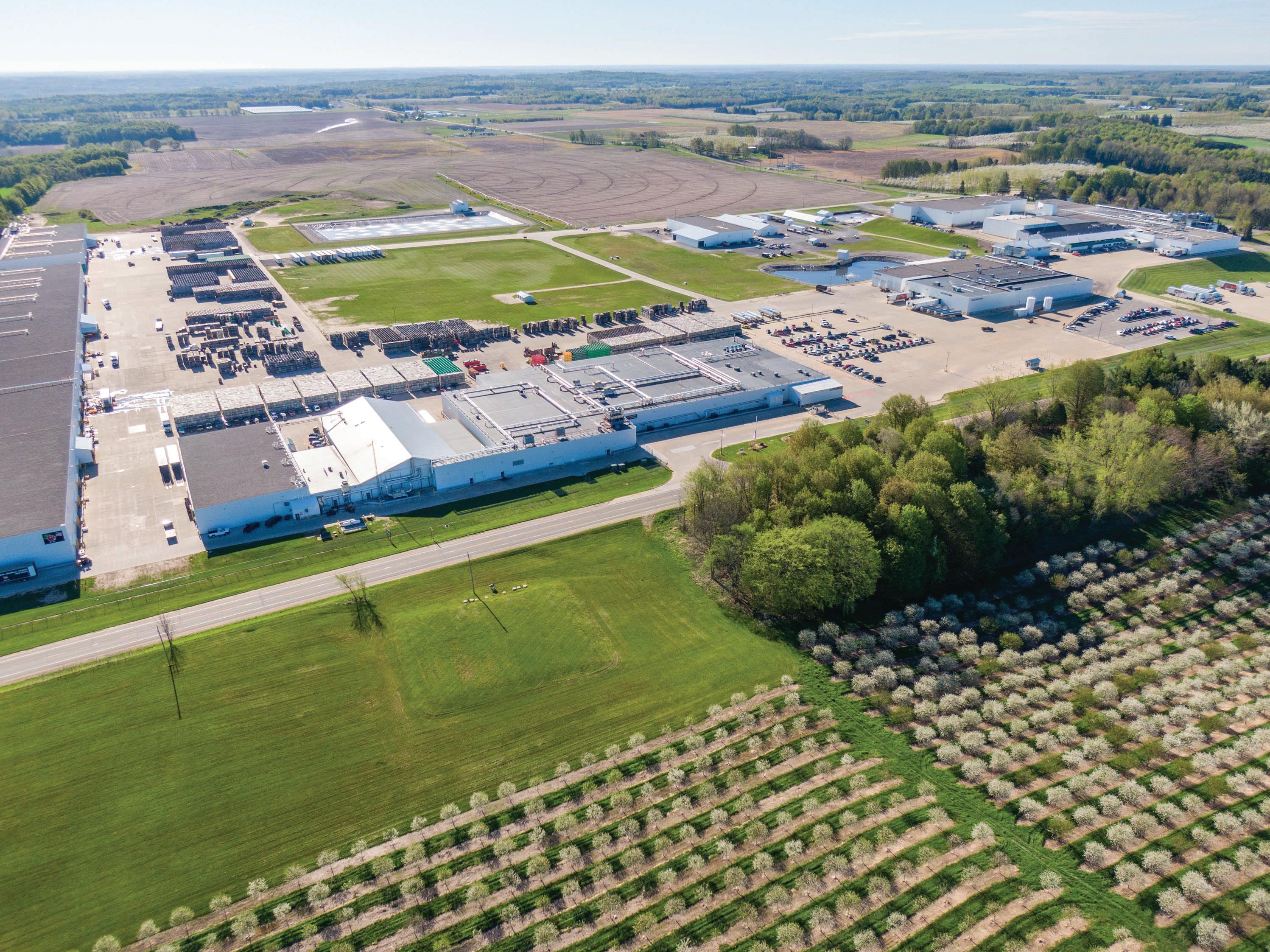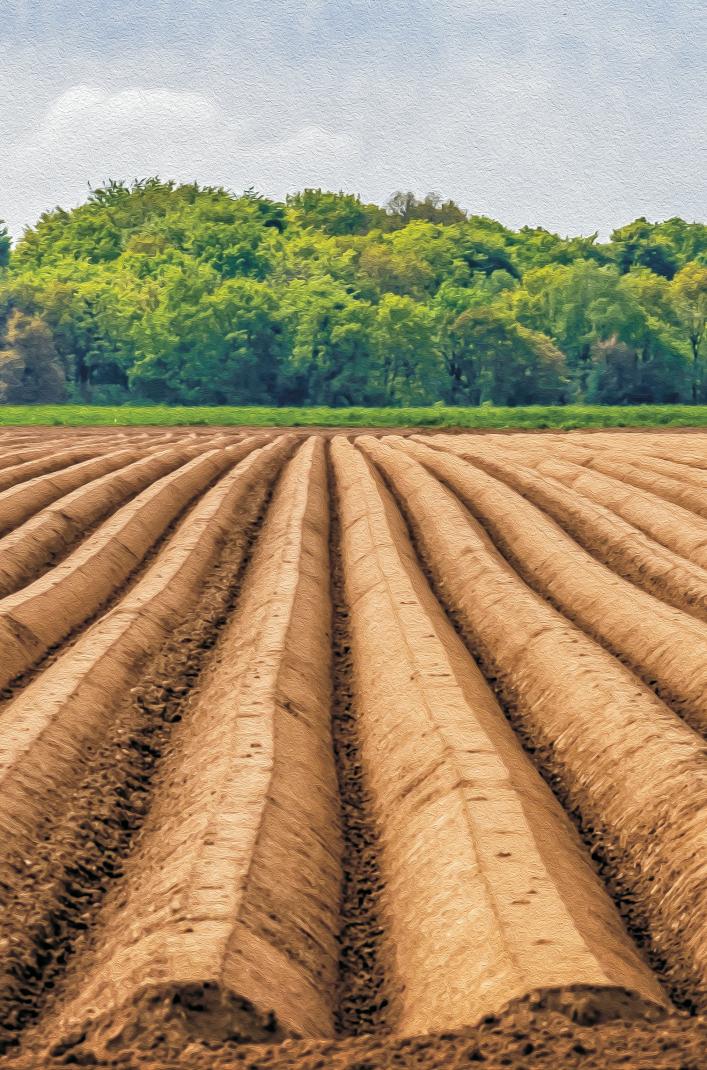






Thank you to The Oceana Echo and to the community members advertising in this publication for supporting our Annual Report. We are grateful for the opportunity to highlight Oceana Conservation District’s contributions over the past year and share our commitment to ongoing conservation and natural resources efforts in Oceana County.
The winter brings an opportunity for a natural reset. The spring looms on the horizon, promising another opportunity to participate in all that our earth mother has to offer to us, from growing crops to exploring our waterways and forests. As we sit in this great in-between, we look backward at what we have accomplished in the past year and begin to form a vision for the next.
2024 was a year of great strides in our conservation efforts in the midst of transition. Throughout this report, you will find stories of how our incredible team of staff members provided education and stewardship opportunities that engaged naturalists of all ages and enriched connections with the diverse ecosystems of Oceana County. Our landowner assistance programs, funded by the MDARD and in partnership with the USDA/NRCS, brought technical assistance and funding to our growers and landowners. Our work was guided by our 5-year strategic plan developed in response to our 2023 needs assessment, where you, the community, identified the following priorities:
1. Enhance water quality
2. Manage invasive species
3. Protect and improve wildlife and habitat
4. Improve forest health and management
5. Protect greenspace and farmland
We also met our goal of securing additional funding for ecological restoration activities and greenspace preservation. In coordination with a local landscape architect, we formed a master plan for Stony Creek Nature Preserve with the support of the Oceana County-administered ARPA funds. We were awarded a Great Lakes Restoration Initiative grant through the USDA Forest Service to create the Oceana Coastal Conservation Corridor along Stony Creek. The GLRI funding will be used to implement new strategies in the management of hemlock forests impacted by the invasive species Hemlock Wooly Adelgid and facilitate the creation of a toolbox of resources for landowners in our county to use in their own forests.
In 2025, we will continue our work on the community priorities that informed our five-year strategic plan. We will strive to meet these needs through the delivery of high-quality education, technical support and landowner assistance programs. We will seek opportunities for land preservation and restoration in Oceana County and open our Stony Creek Nature Preserve to the public.
Our programs to support soil health and protect our water resources will expand to include landowner education in Regenerative Agriculture practices. This new initiative funded by the Conservation Technical Assistance Program will provide landowners with techniques to assess and improve soil health, reduce runoff and erosion, and decrease use of synthetic fertilizers.
Our education and stewardship programs will continue to reach out to community members of all ages and foster a shared spirit of exploration, curiosity, and a sense of belonging. Our forest school and summer day camp programs invite each of us to look through the eyes of the youngest stewards and find magic in every ecosystem, from the forest to the pond to the farm. Our adult programming aspires to integrate technical and scientific knowledge with this same sense of wonder and appreciation for the magic that is within our natural resources.
Many of the highlights of this past year were the work of our former Executive Director, Suzie Knoll, whose efforts in education, habitat restoration and community building were sown into the soil here in Oceana County. Through her decade of service, her commitment to the people and the natural resources of Oceana County created a firm foundation for our next steps, and the seeds that she sowed will sprout for years to come with our continued attention and care.
I am honored and humbled to succeed such an asset to our county as Suzie Knoll, and I am passionate about the opportunity to serve the land, protect our water, preserve our forests and embrace the community our ecosystem supports. I look forward to the journey of learning from each of you about what the natural resources of Oceana County mean to you and how we can work together in our conservation efforts to realize our shared vision.
















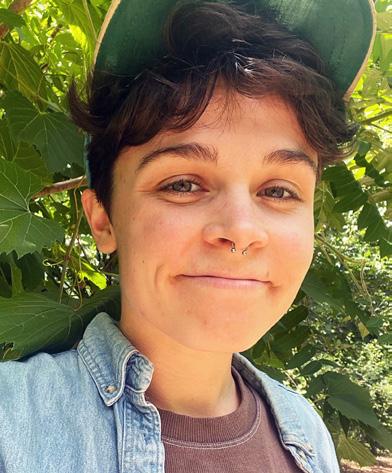


30 MAEAP verifications (new or re-verified in 2024)
194 Forest landowners assisted
1,920 Acres enrolled into Qualified Forest Program
$719,500 USDA funds farmers received for conservation/restoration
27,310 Tree and shrub seedlings sold
45 Acres of pollinator habitat planted
739 Acres planted with no-till grain drill
85 Acres of terrestrial invasive species treated
10 Partnerships forged to address Hemlock Woolly Adelgid
14,768 Pounds of hazardous waste collected
9,000+ Plastic ag containers collected and recycled
1,465 Community members attended educational events

Oceana Conservation District has secured a $200,000 grant from the U.S. Forest Service Great Lakes Restoration Initiative to address increasing HWA treatment needs in the county. This project, the “Oceana Coastal Conservation Corridor,” is enhancing the resiliency and connectivity of 400 acres of vulnerable forestland through an integrated pest management approach. With a combination of invasive species management tools, reforestation, and K-12 place-based stewardship learning, this two-year project aims to establish a toolbox of treatment resources to supplement chemical treatments that can be replicated on public or private lands around the state.
In 2024, staff and partners got to work on both project sites, Camp Miniwanca and Stony Creek Nature Preserve. Camp Miniwanca staff helped with planting site identification and preparation, while Muskegon Conservation District’s HWA crew surveyed and treated hemlocks in priority areas. Project co-lead Nathan Ayers, director of the Michigan Agroforestry Partnership, developed a place-based natural resources learning lab, named the “Tree Lab,” that has since been piloted by more than 100 residents, partners, and Oceana County students!
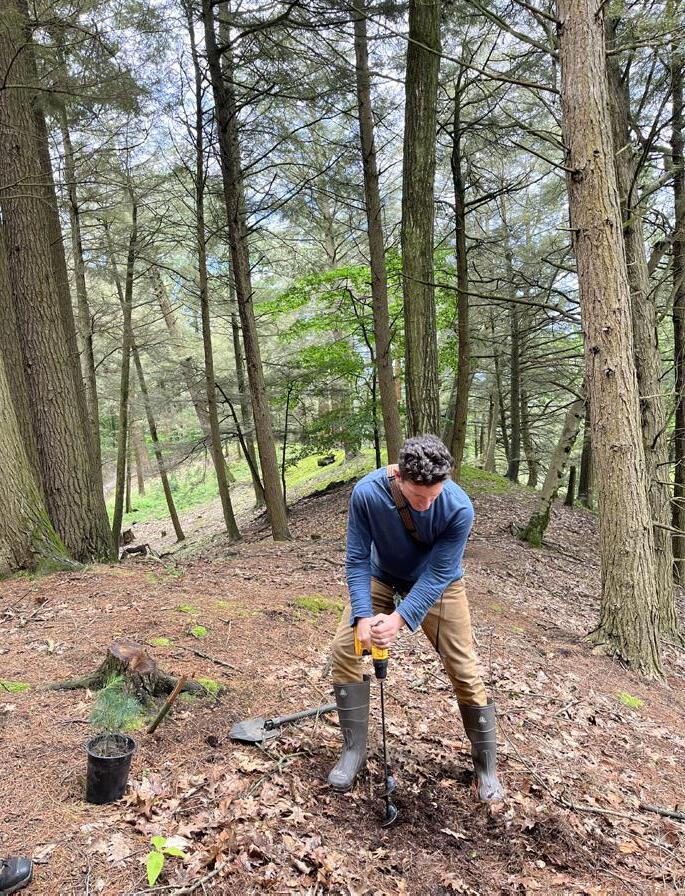
Nate Ayers planting test white pine seedlings to gauge deer browse impacts in proposed planting sites.
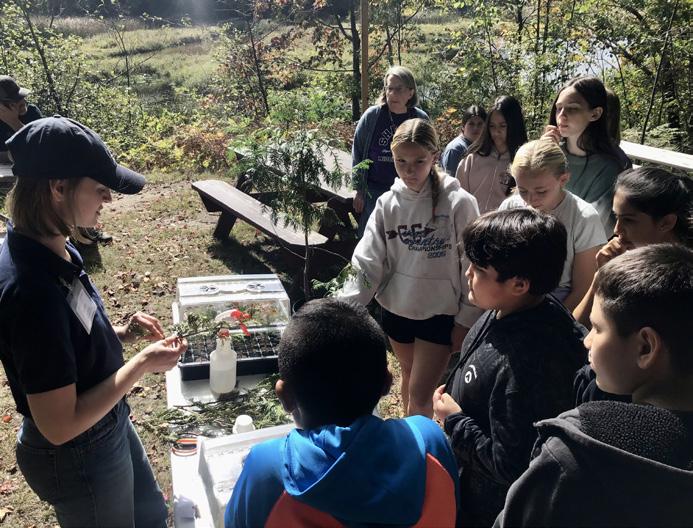
Stewardship Coordinator Sky Harsch leading a Tree Lab propagation activity with Oceana County 6th graders.
In 2025, we will be planting 12,000 trees on critical dunes and riparian edges at Camp Miniwanca to reforest areas of significant hemlock death. We will also engage a target of 1,000 students in tree planting and forest design activities, as well as introduce planting and caging techniques and continuous monitoring projects laid out by the Tree Lab curriculum. We are so excited to continue this project work in 2025!

Oceana Conservation District, MSU Extension and the Oceana County Farm Bureau cordially invite you to this year’s Agricultural and Natural Resources Banquet! We will enjoy drinks, hors d’oeuvres and conversation during the social hour starting at 5 p.m., followed by dinner, brief reports and awards. Our featured presentation, “Agriculture and Water: Working Together for a Better Future,” will be presented by Laura Campbell, Senior Conservation and Regulatory Specialist with Michigan Farm Bureau. Laura works to help farmers achieve their goals of being great stewards of the land, water and air by understanding the environmental regulations affecting their farms and pointing them toward voluntary conservation programs to boost the power of their on-farm practices.
We hope you take advantage of the opportunity to celebrate Oceana County’s agricultural and natural assets while staying up-to-date on current initiatives. Tickets are $25 and must be purchased in advance online at www.OceanaConservation.org or in person at Oceana Conservation District’s office in Shelby or at MSU Extension in Hart. The deadline to register is March 14.
Each year the Committee also seeks support from local businesses to help make the event possible. If you are interested in being a sponsor for the event, please contact the Oceana MSU Extension Office at 231-873-2129. The Committee has collected a variety of door prizes from community business donations that will be awarded at the end of the evening.
Lakeside Agri LLC was selected as the recipient of the annual MAEAP Award for 2024. Each year, the Oceana Conservation District recognizes one farm that has not only achieved MAEAP Verification, but whose owners and operators have embraced the program and made a concerted effort to make improvements to the farming operation with the primary purpose of protecting surface and groundwater resources.
Lakeside Agri is owned by four individuals from Ottawa County: Brent Baumann, Dennis Vanderkooi, Don Windemueller and Jeff Groenhof. The owners each have at least one other farm they own closer to their homes. Dean Twiss, who resides near the farm, is the Farm Manager, and along with his wife Robyn, has managed the day-to-day operation since 2019.
The original 76-acre farm was purchased and planted with blueberries in 2006. There are now 140 acres of blueberry bushes on the farm producing 7 types of blueberries, including both early and late varieties. The farm employs both year-round local and seasonal employees during the summer months. The harvested blueberries are trucked to Lakeside Pic-NPac in Holland for cooling and packaging and marketed through North Bay Produce.
The farm has been implementing conservation-related practices for the past couple of decades. The most obvious practice visible to everyone driving by is the miles of beautifully cared-for conifer windbreaks surrounding and within the farm. Dean helped his dad plant many of the older trees during the years his father managed the farm prior to 2019. Planting windbreaks continues to be an important practice as more acreage is added to the farm and is one of the first practices that takes place on newly acquired land. The windbreaks aid in protecting their farm as well as ad-
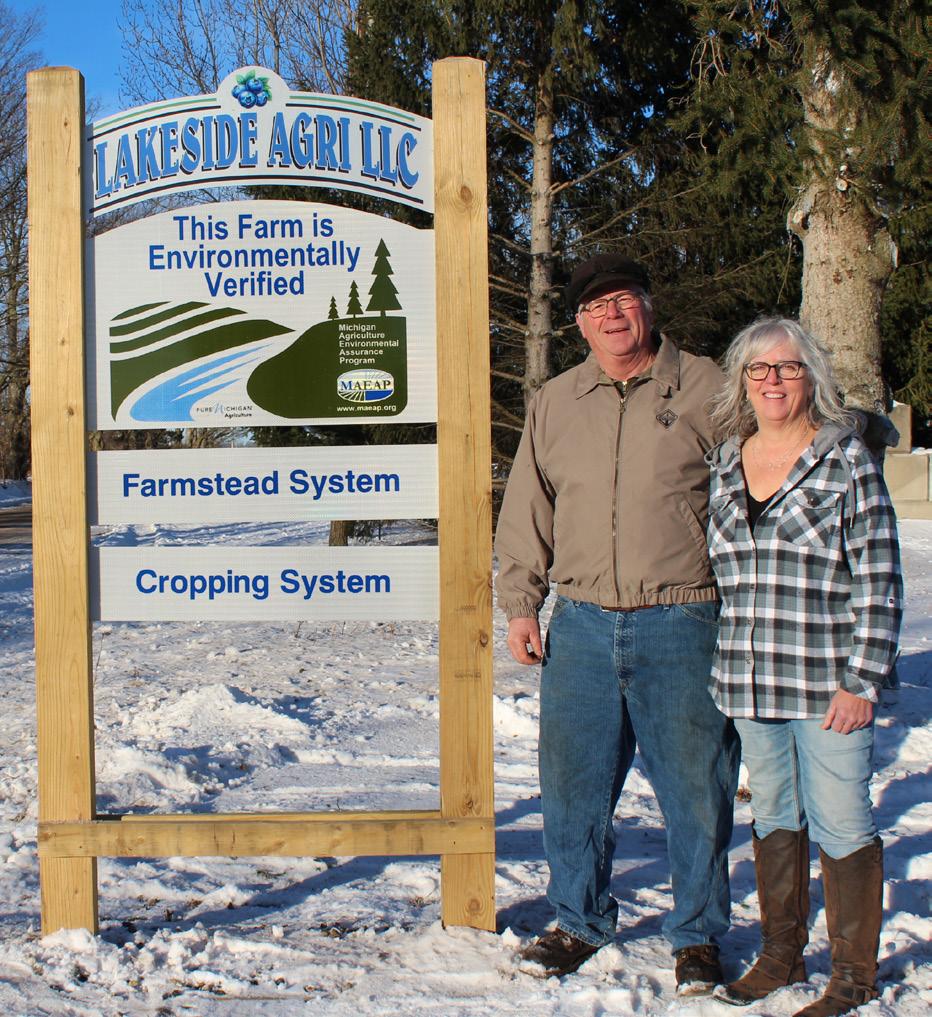
jacent farms and properties from pesticide drift. There are also 1.25 miles of county drains that run through the farm, and much care is taken to protect the quality of the water entering the drains through maintenance of the grass buffers around them. The blueberry orchards have sod middles throughout, and pine wood chips are used for mulching under the bushes, which conserves moisture and prevents soil erosion caused by wind and water. By 2023, all 140 acres of blueberries were switched from overhead irrigation to a drip irrigation system to conserve water use on the farm.
Lakeside Agri implemented several other stew-
The Michigan Agriculture Environmental Assurance Program (MAEAP) is a proactive and voluntary program designed to help farms minimize risks to the environment through a three-phase process: 1) Education 2) Farm Assessment and Practice Implementation and 3) On-farm Verification by a third party. Farms may be verified in one or more of the following systems: Farmstead, Cropping, Livestock and Forest, Wetland & Habitat. A total of 187 systems on 97 farms have been verified over the past 20 years. Primary goals for the MAEAP Technician each year are to work with growers to implement environmental stewardship practices that protect soil and water and meet MAEAP verification standards. Cost-share funds are available to implement practices such as water, soil and manure testing, spill kits, secondary containment, anti-backflow prevention, fuel transfer pads, improvements to pesticide storage and others. The Technician also helps with water use reporting; writing emergency farm, drift management and odor management plans; irrigation uniformity; using the district’s no-till drill and other practices relevant to landowners’ current needs and challenges for addressing natural resource conservation and stewardship.
In addition to working one-on-one with growers throughout the year, the MAEAP Technician participated in the following outreach activities:
• Ag & Natural Resources Banquet & Oceana CD Annual Report
• MSUE West Central Spring Horticulture Meeting
• MDARD Employee Tour Stop at WCMREC (Research Station)
• Great Lakes Commission MAEAP Tour Stop at Lakeside Agri
• Permaculture Design & Forest Farming Workshop
• Farming for the Future Field Day at WCMREC
• District-held programming for youth in Oceana County - 3rd grade seedling distribution & summer day camp on the Farm
• Pesticide Container Recycling (2 events)
• Pesticide Disposal through Clean Sweep held during Household Hazardous Waste Event
• Organizational assistance for Oceana County Farm Bureau Ag Scrap Tire Event
This coming year, MAEAP has evolved into the Conservation Technical Assistance Program (CTAP) which in addition to MAEAP, includes a focus on Regenerative Agricultural practices. CTAP supported services will include farmer surveys, soil health assessments and much more. Stay tuned for more information in the coming weeks!

During the August Farm Field Day at the West Central Michigan Research and Extension Center, MAEAP Technician Lynda Herremans demonstrated a rainfall simulator. The simulator provides a good visual representation of how tillage, organic matter, living roots and ground cover can impact water erosion, runoff, sedimentation, surface water contamination and water infiltration into soil.
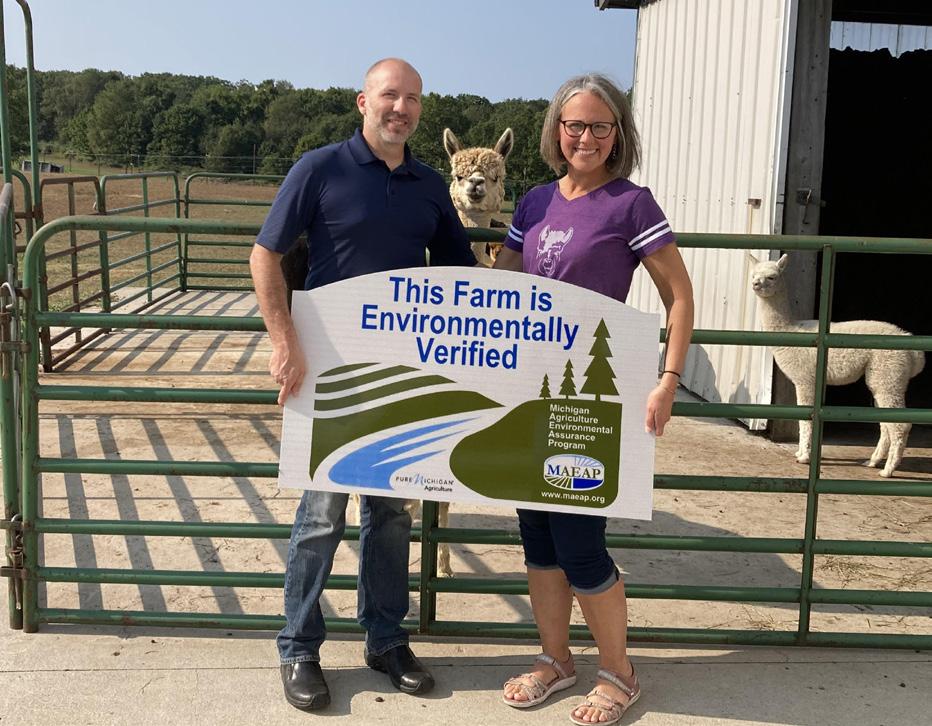
Grand Alpaca Company achieved MAEAP Verification for Farmstead, Cropping and Livestock this past summer. This farm raises alpacas, processes alpaca fiber and sheep wool in their fiber mill and sells alpaca products. Pictured are owners Les and Cherish Meyette (and alpaca photo bomber Brisa).
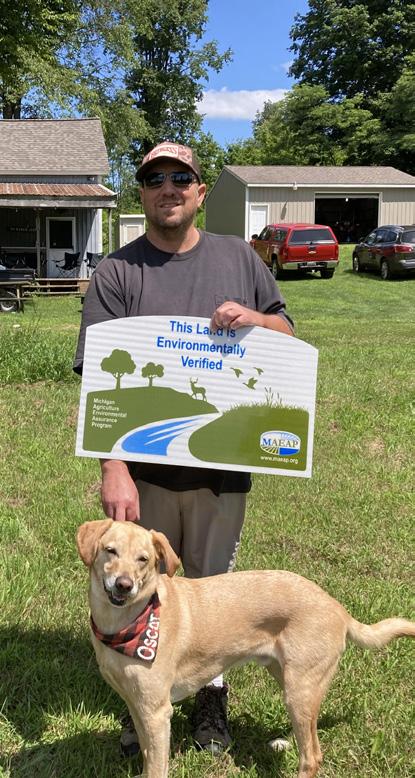
Kevin, Joel, Becky and Nina Hyma (Kevin is pictured with Oscar) received the Forest, Wetlands & Habitat Verification on their Hyma’s Hideaway Ranch property in 2024. They have been implementing conservation stewardship practices for the past two decades, including a Forest Management Plan, tree planting, select tree harvests, invasive species control, wetland restoration, native grass and pollinator plantings and nutrient and soil health practices for their wildlife food plots.
ardship practices on the farm, including secondary containment for pesticide and fuel storage, anti-backflow protection for the well, irrigation management (scheduling, monitoring, and water use reporting requirements), pesticide and nutrient management (pest scouting, pesticide jug recycling, soil testing and leaf tissue sampling). They have developed two emergency farm plans, stocked spill kits and posted proper signage. Food safety is another extremely important part of operation management. Robyn says she benefited from her many years in the nursing field because she learned to keep organized detailed records. Record keeping is an integral part of food safety documentation and audits, water use reporting, pesticide handling and use, housing inspections and the many other reports required for growing produce safely and protecting employees.
It was Dean’s idea to pursue MAEAP verification for the farm because he felt that it was important to ensure the farm was doing everything possible to reduce potential risks to the environment and to be recognized as a good environmental steward. He contacted the Oceana Conservation District MAEAP Technician Lynda Herremans to enlist her help with the verification process. Since most of the practices required were already in place, working through the process did not take long, and the farm was MAEAP verified by the 3rd party verifier in June 2024. Lakeside Agri is Oceana County’s first blueberry farm to implement this voluntary program.
The MAEAP Award will be presented to Dean and Robyn Twiss of Lakeside Agri at the Ag & Natural Resources Banquet on March 20th. Please join us in celebrating Oceana County agricultural producers and their dedication to protecting our natural resources!

7
• Grand Alpaca Co. (Farmstead, Cropping & Livestock) Claybanks Township
• Lakeside Agri LLC (Farmstead, Cropping) Grant Township
• Hyma’s Hideaway Ranch (Forest, Wetlands & Habitat) Elbridge Township
• Memorial Nature Preserve (Forest, Wetlands & Habitat) Benona Township
RE-VERIFICATIONS – 23 (systems)
• Aerts Farm – Weare
• Benona Chestnuts- Benona
• Clarence Chase Farm- Benona
• DeRuiter Farms- Hart
• DeRuiter Farms- Elbridge
• Hiddema Farm- Shelby
• Palmer Orchards- Hart
• R & J Bush Farms- Shelby
• Robert Bush Farms- Shelby
• Snider Farms- Airport View- Hart
• Snider Farms- Home Farm- Hart
• Stephens Farm- Colfax

2024 marked the 12th year that the Michigan Department of Agriculture and Rural Development has funded a District Forester to work with the Forestry Assistance Program (FAP). In fiscal year 2024, 194 contacts were made to the District Forester. As a result, 127 site visits were provided covering 6,630 acres (10.3 sq. miles) throughout the three-county (Oceana, Newaygo, and Muskegon) Region 15 service area.
The FAP provides landowners a free site visit, assistance, and recommendations about forestry-related topics. Questions such as: What is the status of my woodlot? Is it a good time to harvest trees? Do I have good habitat for deer? What kind of state/federal programs can I utilize? Do I have any insect and disease issues in my woodlot? These questions and many others can be answered with the help of your District Forester.
A major focus of the FAP is the administration and promotion of the Qualified Forest Program (QFP). In FY 2024, 29 new landowners were verified for the QFP totaling 3 sq. miles of property. The program provides a property tax exemption for private landowners who actively manage their woodlots to improve wildlife habitat and for the production of forest products. The goal of the program is to promote active forest stewardship of local woodlots, keep forestlands forest, and to support Michigan’s forest products industry.
The FAP also provides a referral service to help landowners connect with private consulting foresters to write a forest management plan, apply to the Qualified Forest Program, or to administer a timber sale. Overall, 33 landowners used this process in FY 2024. To help evaluate the effectiveness of the FAP, the District Forester attempted to estimate the economic value of referral activities. For the Region 15 service area, the results included 21 forest management plans referred to private consultants and public programs, resulting in an estimated $44,500 of economic activity. Also, 16 timber harvests were referred for administration covering 1,040 acres with the potential to yield approximately $173,000 worth of forest products.
This fiscal year was the District Forester’s sixth year (2019-2024) involved with the FAP program. During this six-year span, 1,097 contacts have been made that have resulted in 708 site visits across the region!
The District Forester was also involved with six outreach and education events during the fiscal year. For example, a “Forest Forensics at the Otto Nature Preserve” hike was provided to the general public. Other events included a “Planting for Wildlife” workshop held at the Oceana Conservation District, and a “Forestry Programs and Forest Health Update” presentation was given
By Rod Denning CF, Forester, OCD & Josh Harrison, Forester, Hydrolake Inc.
Interested in a different land management activity? Consider planting red pine!
The native range of red pine in Michigan covers the Upper Peninsula and the Northern two-thirds of the Lower Peninsula. An area along Lake Michigan, including Oceana County and south to Ottawa County, is also in the native range. However, how often do we see native trees? Not often. Red pine needs fire to help establish regeneration and maintain adequate stand conditions. However, due to fire suppression practices, natural red pine areas are experiencing decline. If native red pine trees are found in our area, I’d highly recommend they be preserved to support biodiversity.
Red pine plantations are the most common red pine trees we see today. Many of the plantations are the result of extensive tree planting activities of the Civilian Conservation Corps starting in the 1930s. Additional plantings were encouraged by State and Federal agencies during the 1940s–1970s. Many of these plantations have not been well managed and typically provide lower-value forest products.
Where should you plant red pine? It does well on sandy to sandy loam soils that are well drained; sites that are too rich or poorly drained can cause fungal problems. Red pine plantation management generally should consider two important variables: landowner goals and site conditions. If the investment horizon is long-term (60+ years of management), and you have a healthy, productive site, then the ultimate goal could be utility pole quality products. If, however, your investment horizon is shorter, or the site is problematic, then sawlogs at best, or bolts, fence posts and pulp may need to be the management objective.
For utility poles, the optimal planting spacing of roughly 900 seedlings/acre on a 6 ft. x 8 ft. grid is recommended. This spacing will promote straight tree growth with minimal taper and few knots, conditions critical for utility pole quality. Below is a recommended management scenario.
• A first thinning should occur 30 to 35 years after planting, where every 4th row and defective

at the Farmer Education Day program for the Newaygo Conservation District and Newaygo County Farm Bureau.
If you’re a forest landowner and are interested in services that the Forestry Assistance Program offers, please contact District Forester Rod Denning at 616-920-9775 or rod.denning@macd.org.
trees are removed for bolt/pulpwood.
• A second thinning after another 7–10 years (~45 years after planting) is characterized as ‘thinning from below’ and should remove defective— low-potential trees for sawtimber and/or bolt/pulp wood. Additionally, small poles that won’t graduate to the next size class could also be harvested.
• During a third thinning after another 7–10 years (~55 years after planting), larger mature trees should be harvested while retaining trees that still
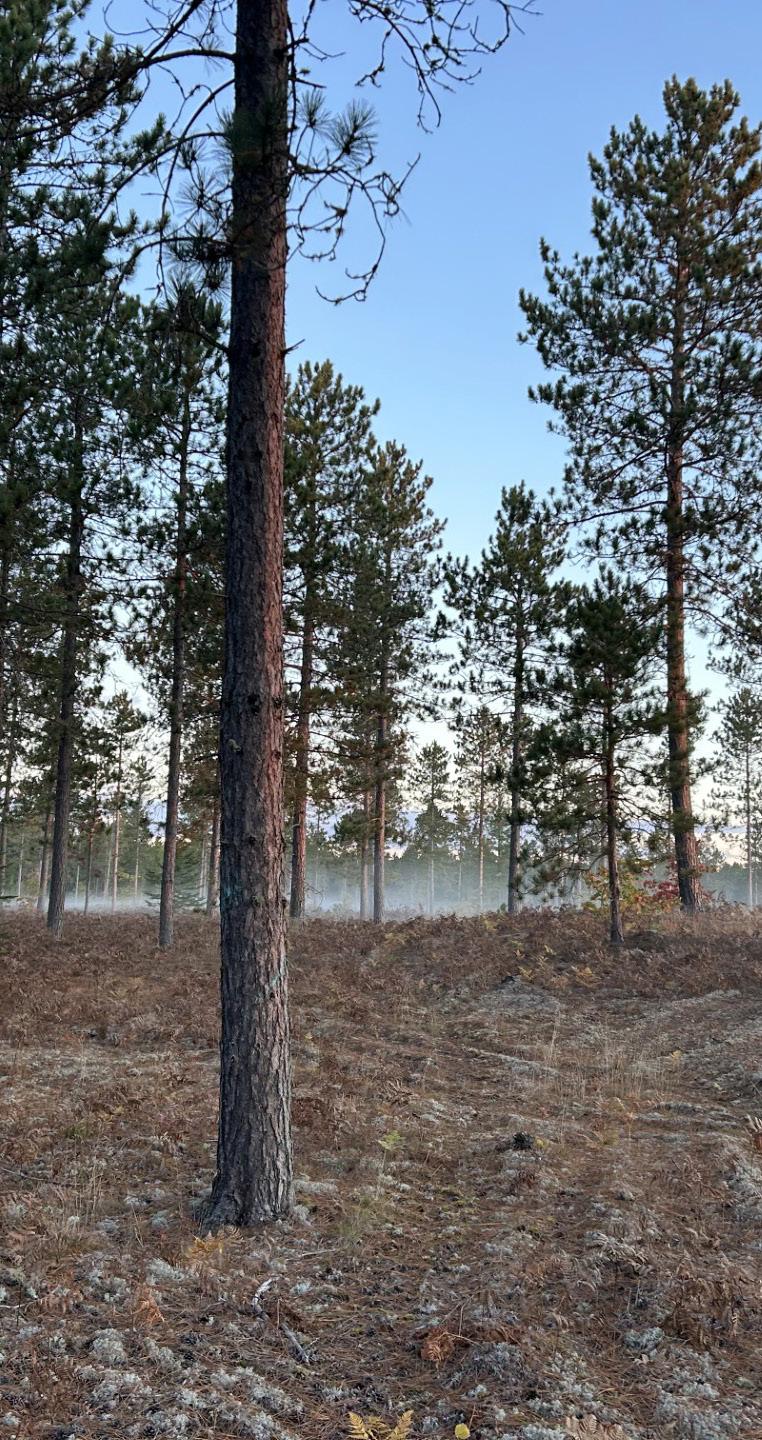
have the potential to grow into higher size classes like 40’ to 45’, 45’ to 50’, and 50’ to 55’. However, if the stand is sufficiently mature at this point, a complete tree removal harvest could be warranted.
• Another option could be a fourth entry in ten more years (~65 years after planting). Pine and hardwood regeneration may be prevalent and should be protected during this harvest where all remaining utility poles are removed.
• A final possibility is that some mature pines could remain to continue to seed in the stand for additional natural pine regeneration. If this occurs, the landowner should anticipate a subsequent seed tree harvest at the very end of the rotation (~75 years). Otherwise, plans for site preparation and planting could be considered to start a new rotation cycle.
This long-term management strategy for utility poles is complex, but it can yield twice or more the stumpage value of any other red pine forest product.






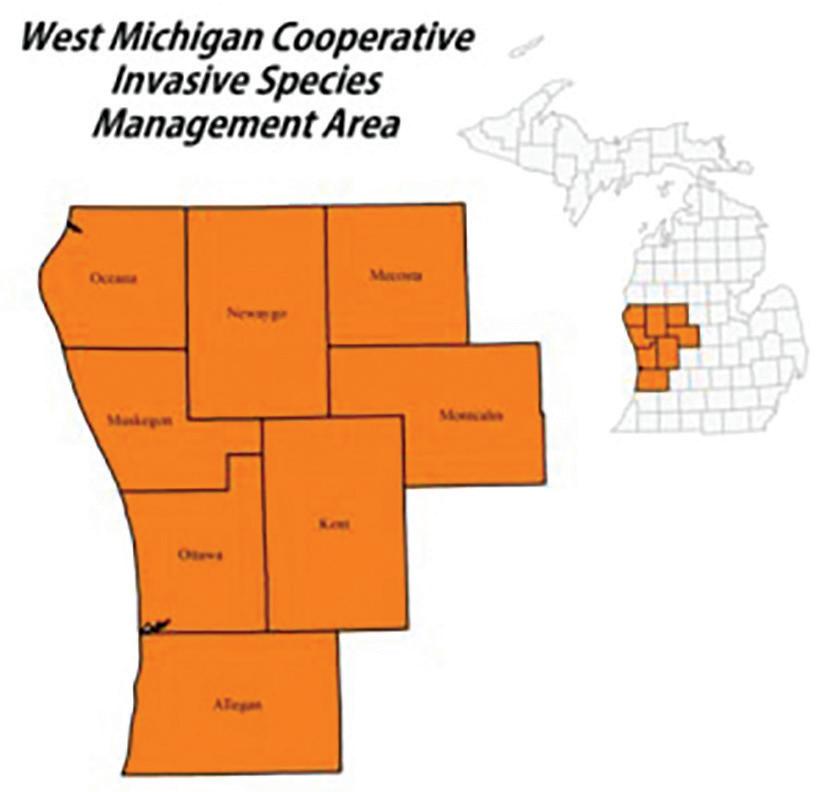
As one of seven counties in the West Michigan Cooperative Invasive Species Management Area (CISMA), Oceana County benefits from state and federal grant funds to treat invasive species in forest and wetland areas. Oceana Conservation District works closely with the Ottawa and Muskegon Conservation Districts to implement invasive species treatments in Oceana County. CISMA funding prioritizes treatment of species that are present in our county in relatively small or isolated populations but pose a high risk of further spread. An “early detection, rapid response” approach enables land managers to act quickly, before the species population grows to the point where it cannot be locally eradicated.
During the 2024 field season, CISMA crews treated 84.62 acres of terrestrial and aquatic invasive species on U.S. Forest Service land and private forestland in Oceana County. Target species in 2024 included Japanese Knotweed, Japanese Barberry, invasive Phragmites, Garlic Mustard, Lily of the Valley, Autumn Olive, Multiflora Rose, Amur Honeysuckle, Spotted Knapweed, and Black Locust.
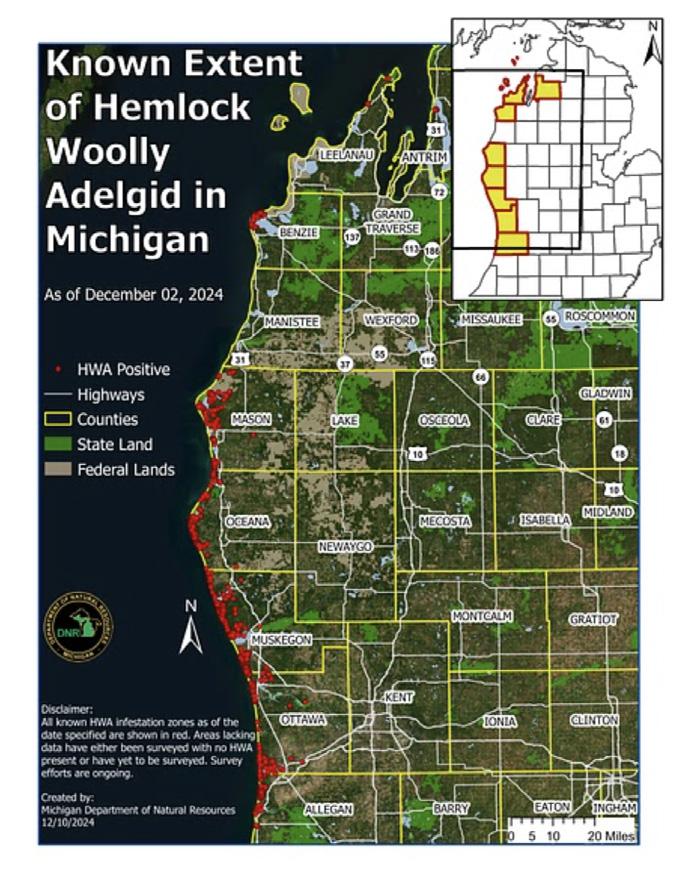
The West Michigan CISMA is also closely monitoring and actively involved in managing Hemlock Woolly Adelgid (HWA) that is prevalent in West Michigan (see map). Unfortunately, 2024 marked another tough year for Eastern hemlocks in Oceana County. Infestations are spreading, however, more grant funds were available for Oceana County last year, and HWA strike teams based out of the Ottawa, Muskegon and Mason-Lake Conservation Districts were able to treat 12,099 trees in 2024. Recognizing the need for awareness and outreach, we hosted two educational events on HWA in 2024; a self-treatment training workshop and an identification training hike. Staff also participated in three HWA field training days this year hosted by MDNR and other regional partners. Regional conservation districts are partnering on another self-treatment training in early July of 2025.
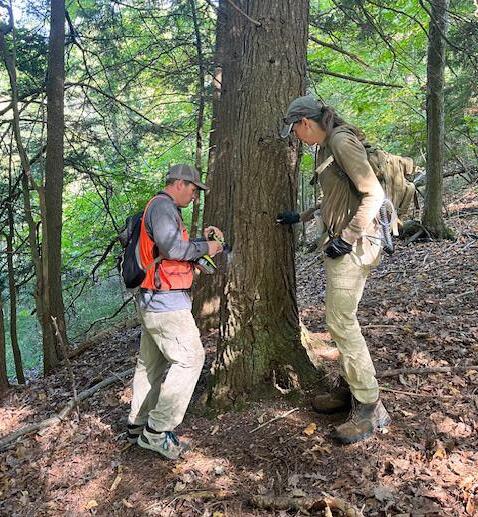
Oceana Stewardship Coordinator joined MDNR Forest Division and Wildlife Division staff at Pentwater State Game Area to complete an HWA treatment training. The crew was able to treat a total of 145 trees, totaling 1,469 injection holes, in only a few field hours!
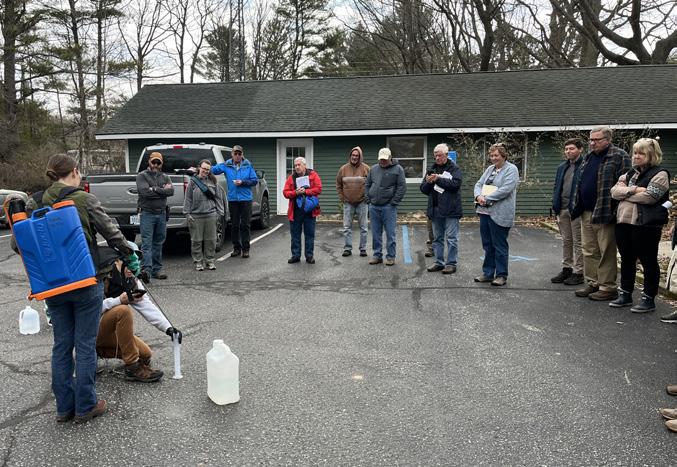
Partners Bri Jasinski, HWA Project Manager with Mason-Lake Conservation District, and Murielle Garbarino, West Michigan CISMA Coordinator, teaching residents how to calibrate their backpack sprayer at Oceana’s HWA self-treatment workshop.
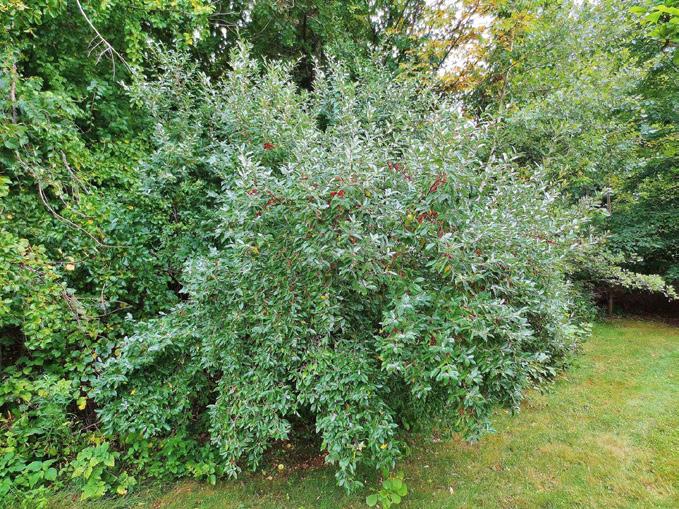
Autumn Olive, a deciduous fruiting shrub, is a widespread invasive that thrives on our roadsides, forest understories, grasslands, and field edges. Its shade production quickly outcompetes and displaces native vegetation, and is a prolific seed producer, making control difficult after establishment. Hand pulling is an effective way to control seedlings, however, herbicides will need to be used once the shrub is established. We recommend cutting and stump treatment with herbicide in late summer.
Pro Tip: Autumn Olive berries make a very tasty jam! Be sure to harvest fruits before cutting and treating.
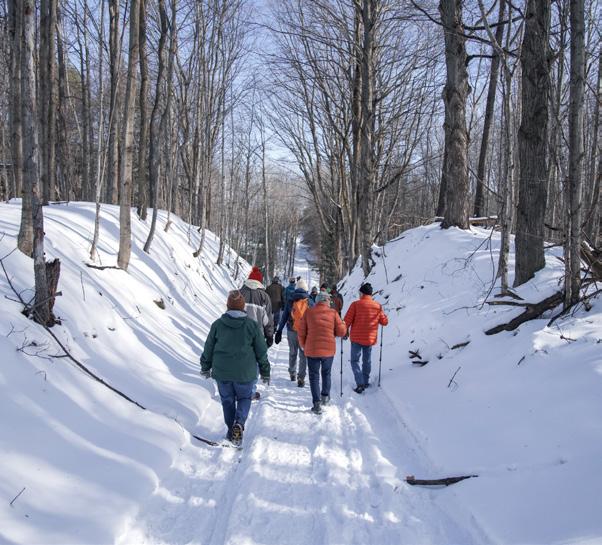

The West Michigan Watershed Partners (WMWP) is a coalition of local watershed groups in a five-county region in West Michigan. WMWP convenes quarterly to pool resources and share information on watershed planning and management. Notable projects that local partners have completed in Oceana County are highlighted below.
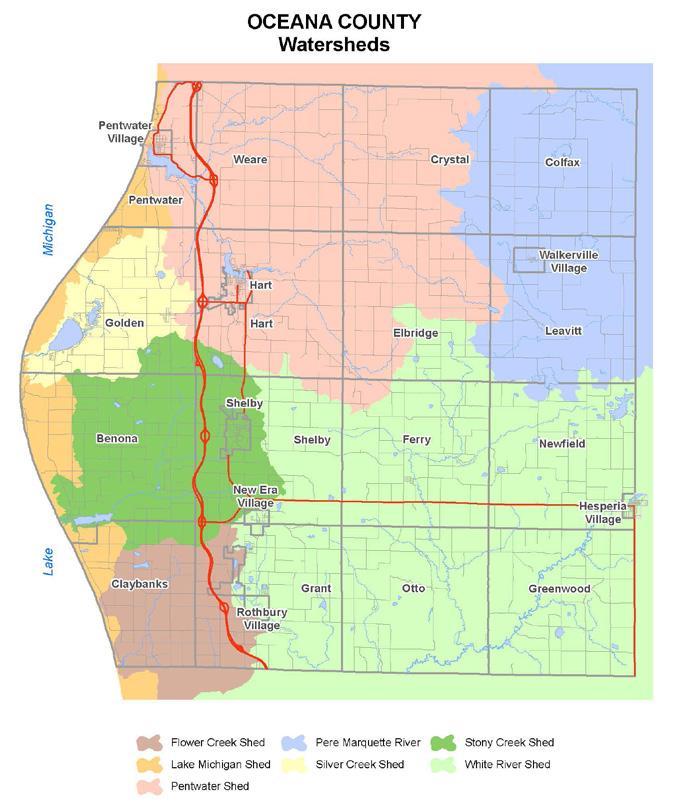
Initiated in 2019 by Trout Unlimited and the White River Watershed Partnership, the White River Watershed Collaborative (WRWC) consists of local communities and governments, state and federal agencies, non-profits, local business owners and White River enthusiasts. The WRWC is working to facilitate collaborative, data-driven restoration and protection of the White River Watershed.
The White River Watershed Collaborative has invested a lot of time and effort to identify priorities for enhancing the watershed and fisheries, with one priority identified as improved fish passage. In 2024, Oceana County Road Commission completed two culvert replacements in the North Branch on Swinton and Cushman Creeks as well as restoration of 1,000 feet of instream habitat. This brings the culvert replacement total in the watershed to about 20. There is now an unobstructed connection from Lake Michigan to the headwaters of this sub-watershed above Cobmoosa Lake in Elbridge Township and Knox Swamp in Ferry Township. Partners completed a remarkable amount of hands-on fieldwork and community engagement within the White River Watershed in 2024. Monitoring and research activities like macroinvertebrate sampling, water temperature, and EnviroDIY monitoring efforts continued this year and volunteer monitoring events were well attended. The collected data provides continuous updates on relative water quality, temperature fluctuations, water levels and conductivity, enriching our understanding of watershed health.
Pentwater Watershed
The Friends of the Pentwater River Watershed, a group that formed in 2021, received the results of their 2023 Watershed Planning Survey with help from Grand Valley State University’s Annis Water Resources Institute. The data collected showed that watershed property owners are largely hunting and fishing enthusiasts with deep stewardship ties and a widespread interest in watershed activities and educational opportunities. The survey revealed gaps in knowledge regarding sources of water pollution and consequences of poor water quality, as well as riparian best management practices. With this information, the Friends of Pentwater Watershed and Oceana Conservation District are pursuing funding for a watershed stewardship education series, aiming to fill in some of the gaps in knowledge and engage residents in local watershed stewardship activities.
Stony Creek Watershed
The large Marshville Dam project completed demolition and construction efforts in the summer of this year. The project included the removal of dam remnants, two old bridges, three culverts and approximately 3,800 cubic yards of soil to create a pilot channel and new floodplain in areas impacted by the dam. Restoration of 2,500 feet of instream habitat was done by installing 139 woody habitat structures and 230 feet of toewood to provide both habitat and erosion control. The project was coordinated and managed through a collaborative partnership between the Oceana County Parks and Recreation Commission, Oceana County Road Commission, West Michigan Shoreline Regional Development Commission and the Conservation Resource Alliance.
As a coldwater trout stream, special attention has been given to the protection and restoration of hemlock-shaded areas along the creek. The Oceana Coastal Conservation Corridor project will focus on replanting and integrated pest management activities to address Hemlock Wooly Adelgid infestations on 400 acres of riparian land along Stony Creek from the headwaters to the mouth where Stony Creek/Lake meets Lake Michigan. Treatments were conducted by Muskegon Conservation District in 2024 and plantings are set to start in spring of 2025.
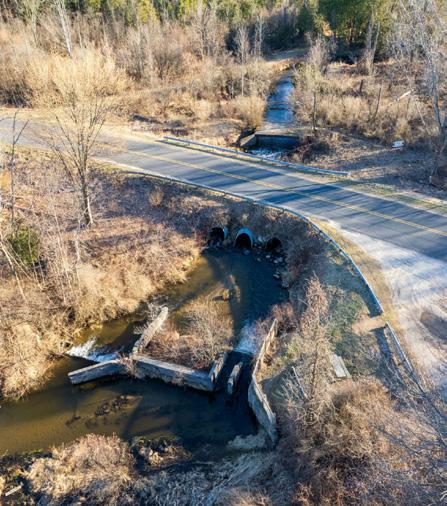
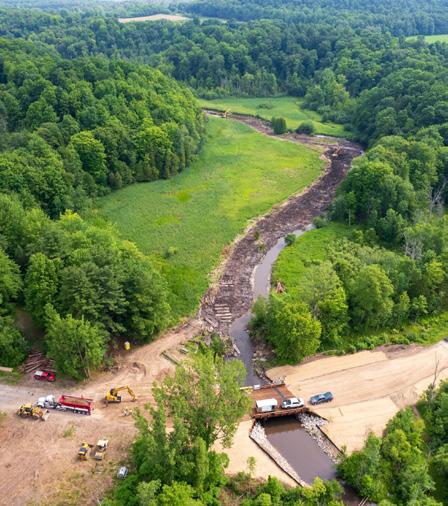
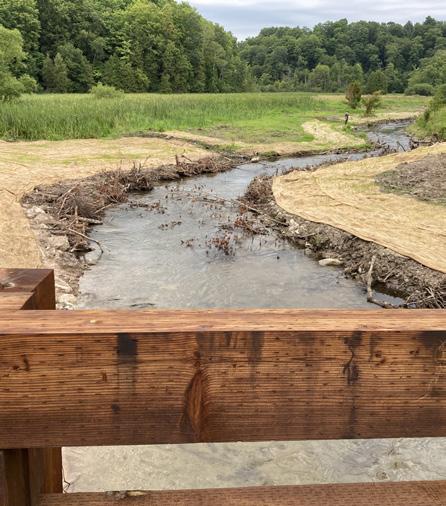
Join Our Stewards:
Looking for ways to participate in meaningful conservation activities while connecting with like-minded locals? Join staff and volunteers for our regular Stewardship Days! Stewards have the opportunity to get involved with long-term restoration projects, as well as trail development and maintenance days and roadside and beach beautification events. This is a chance to take ownership of our beautiful backyard and help foster the health of Oceana County’s forests, fields, lakes and streams. Email Stewardship Coordinator Sky Harsch at sky.harsch@macd.org for a calendar of events and to get involved.

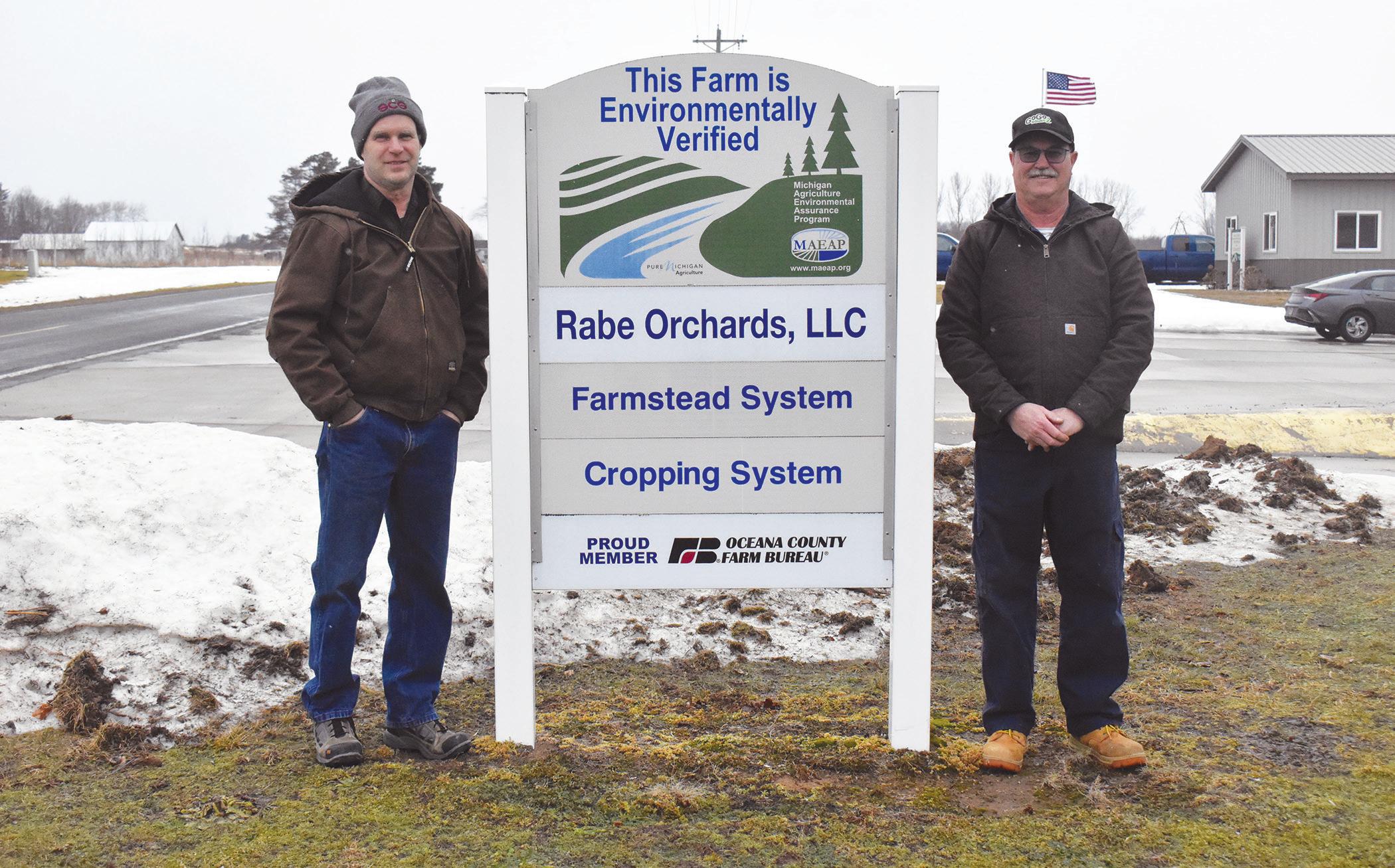
“It’s the only thing I’ve ever wanted to do,”
- DaviD Rabe of Rabe oRchaRDs, conseRvationists of the YeaR
By Sharon Hallack The Oceana Echo Community Contributor
For the Rabe brothers, David, Raymond and Chris, farming in Benona Township, one of the finest fruit belts this county has to offer, is just part of their DNA. It was also part of what their father and grandfather did before them, and looks to be part of what some of their children and grandchildren will do one day as well. “Farming is the only thing I knew growing up,” said Chris.
For three generations, Rabe Orchards have not only been growing fine quality fruit, but have also been working with the Oceana Conservation District (OCD) and the USDA National Resource Conservation Services (NRCS) to implement numerous conservation practices. This year, for their dedication to preserving Oceana’s many natural resources, Rabe Orchards is being recognized as the OCD’s Conservationists of the Year.
The Rabe family farm got its start raising cattle on the fertile lands of Benona Township when it was established somewhere in the 1920s by the Rabes’ grandfather, Charles (Carl) Rabe. His son, Harold, father of the Rabe brothers, took over operations after he was married and began raising fruit in the mid-1960s. Harold was one of the earliest cooperators with the Conservation District in the 1970s, not long after it was formed.
Rabe Orchards was established in 1997, when David, Raymond and Chris took over operations. Currently they raise apples, cherries, peaches, and pears - all strictly for processing - and some asparagus as well. Their largest endeavor to date, includes a 40,000+ square-foot modern apple storage facility, built in 2014, which can store up to 400,000 bushels of apples during peak season.
About three-quarters of the apples grown on the farm and all of the apples received from other growers are kept in the storage facility and sold to Materne North America, a wholly-owned subsidiary of Groupe Bel of France, and the producer of the popular GoGo squeeZ brand of products. Their remaining one-quarter of apples goes to Indian Summer for applesauce or slices, while their pears go to Gerber for baby food and their peaches go to Titan’s in Georgia.
Rabe Orchards continues to follow in their father’s footsteps when it comes to protecting this area’s natural resources. In addition to the conservation practices their father already had in place, the farm has since implemented many more. In total, Rabe Orchards utilizes windbreaks, cover cropping, grassed waterways, sod in orchards, integrated pest management, nutrient management, agrichemical handling facilities, drift management, emergency farm plans, pollinator plantings, heavy-use protection on roadways and mulch management.
“Dad worked with the Conservation District, but he never had the farm MAEAP (Michigan Agricultural Environmental Assurance Program) certified,” David recalled. In fact, it wasn’t until the brothers took over operations from their father in 1997, that the MAEAP was even developed. “We were first certified in 2007 and have been re-verified three times since.”
MAEAP is an innovative, proactive program that helps farms of all sizes and all commodities voluntarily prevent or minimize agricultural pollution risks. More than 90 farms are verified in Oceana County and 6,300 statewide. The brothers chuckle when they think about some of their past farming practices. “We always used to work up our asparagus fields and orchards every spring. Everybody
did it. It was how you kept the weeds down, and it looked better too,” said David.
“I remember the day someone from Cheever’s came around and introduced Roundup, saying, ‘Here’s a brand new chemical; it will take care of all the weeds,’” Raymond added.
While weed killer and other chemicals have their place in modern agricultural production, Rabe Orchards relies on working closely with the OCD to implement environmentally-friendly practices to not only help protect the land but also to be better stewards and cut costs.
Whether it’s repairing apple boxes, fixing equipment, trimming trees or attending meetings in the winter months; maintaining tree health and applying fertilizer in the spring; harvesting asparagus and fruit in the summer; or shipping apples to the Materne plant in Traverse City, almost any month of the year, there’s plenty to keep three brothers and their employees busy.
“We’re happy if we’re done by November 1 with the last of the apples,” said Raymond.
Chris shared how the farm now uses what is called “spoon-feeding” fertilization practices. Rather than applying fertilizer only once and at a heavier rate, the farm spreads applications out over May, June and July, utilizing soil sampling and stages of crop development to help them decide how much product to apply at any given time. “It gives us time to evaluate the crop load and saves on input costs,” he said.
It is quite amazing how far integrated pest management (IPM) has come in recent decades. For centuries, humans observed their crops and developed various pest repellents. Back in the day, it was each man for himself, and it was their personal responsibility to scout their fields, figure out what may be infecting them and come up with a solution. Now agriculture is much more integrated. “Local chemical reps have been instrumental in bringing our neighbors together. They share what other farms are dealing with, and we work more closely,” said Raymond.
Producers used to have crop scouts tour their fields every week looking for pests. Then pheromone traps came on the scene and made collecting the pests easier, but scouts still had to make a trip to the farm each week to check each trap. Last year, for the first time, Rabe Orchards used pheromone traps equipped with tiny cameras that can be checked from a field scout’s cell phone. Simply amazing!
Another exciting and revolutionary initiative is Rabe Orchards’ recent designation as a “Regenerative in Transition Apple Orchard.”. “We’re one of the pilot farms in the county. Big companies are trying to be more environmentally friendly and are studying different practices and data to determine what (if any) changes can be made. It used to be referred to as ‘green’ or ‘carbon-friendly’ farming. For example, we mow our orchard grass higher now. The idea is the more you can shade the soil, the taller the grass is able to grow. Taller grasses take more carbon out of the air and put it back into the soil where it becomes nitrogen the tree can use,” Chris explained. “Everything we’re learning (with this initiative) is the opposite of what we’ve done in the past.”
Though not an OCD-sponsored program, “Even the storage facility is environmentally friendly,” he said. “It’s only the second of its kind in Michigan, using very little freon. The freon cools a secondary system, and that secondary system is what cools the fruit. With 14 rooms, we only have 108 pounds of refrigerant in the whole system compared to older facilities that use 200-300 pounds of re-
frigerant per room.” This state-of-the-art facility was actually one of the stops on the MAEAP Bus Tour in 2018.
The three brothers obviously work well together, which is quite an accomplishment in itself. They each keep busy taking charge over their individual areas of expertise. David works primarily as the farm’s office manager and bookkeeper; Raymond spends his time managing outdoor farm operations, while Chris is primarily in charge of the storage facility. Although they are quick to add that each is able to fill in where needed.
“When I became the Oceana MAEAP Technician in 2012, David Rabe was the Oceana County Farm Bureau President. His support was instrumental in my efforts to organize the first Oceana Conservation District/Oceana County Farm Bureau MAEAP Field Day as a partnership event. This has been an annual event every year since. Rabe Orchards was also a gracious host for one of the MAEAP Field Day stops in 2018, allowing tour participants an opportunity to see firsthand their new cold storage facility. I have also had several opportunities over the past 12 years to work with Rabe Orchards on MAEAP verifications and as a member of the Ag & Natural Resources Banquet Committee. I’ve appreciated their eye towards environmental stewardship and their commitment to promoting Oceana agriculture,” Oceana MAEAP Technician Lynda Herremans shared. “They are very deserving of this award.”
As with any business, each year brings its own set of challenges. 2012 was a year fruit growers and fruit lovers remember all too well. The unseasonably warm March and April temperatures that year forced bud break and bloom much too early. By the last frost in May, most of the fruit in West Michigan was destroyed.
Despite the devastation to farms across the state, the Rabe brothers look back lightheartedly now. “I went camping 18 times that year,” laughed Chris.
“I took my first trip on the Badger,” smiled David.
“We weren’t even going to harvest, but we figured we had nothing else to do,” Raymond added. “Then we saw our neighbors shaking cherries and thought maybe we should at least get the shaker out and make sure it still ran.”
“We walked ahead of the shaker and skipped around the orchards trying to find trees we could shake. I think we got 5-6 tanks is all,” said Chris.
“We didn’t run equipment if we could help it. We didn’t want to break anything because then we’d have to fix it, and we couldn’t spend the money,” added Raymond.
The Rabe brothers are glad those types of years are rare. “The last three apple years have been good,” said David.
When asked what’s next, they all agree, retirement isn’t a word farmers use. “It’s not a job.” “It’s a way of life.” “It’s in your blood,” they all concurred. Farming fruit and taking care of the land is what they’ve always known and what they’ve always done. They look forward to continuing to do it well, and well into the future. As younger family members take on more responsibility, the baton will be passed, senior leaders will step aside, but not out. “It’s the only thing I’ve ever wanted to do,” says David.
Rabe Orchards is grateful to the many organizations and programs that have come alongside their operation and family from the beginning and helped them be as successful as they are. “Our goal is to keep the land as good as possible for the next generation,” said David. Partnering with Oceana Conservation District has had a major influence, and it is evident this generation of farm operators is well on their way to leaving a legacy to the next.
From forest preschool and nature day camps to owl prowls and wildflower walks, Oceana Conservation District education programs provide meaningful learning opportunities for nature lovers of all ages. By facilitating deep exploration and understanding of our forests, fields and waterways, the Conservation District nurtures the call to stewardship of our precious Oceana County natural environment. In 2024, this was accomplished through an engaging array of classes, workshops and camps designed to meet the interests and needs of Oceana County residents from babes in arms to honored elders.
When our Knee-high Naturalists gather, the woods of Doolittle County Park and Gales Pond are alive with the joyful sounds of children as they play, explore, hike and sing. The spring and fall sessions were well attended with over 20 children and their families participating. Imagine the awe of rolling a log to discover your first red-backed salamander or listening quietly to the beckoning call of a wood thrush as you enter a hemlock grove. A highlight among these magical moments last spring was witnessing a newborn fawn rise up on shaky legs to bound after its mother! While the woods and waterways provide the inspiration for learning, our basecamp infrastructure continues to provide numerous opportunities for the type of self-directed, open-ended exploration and play that leads to resilient, creative adults. In 2024, our forest classroom grew to include an ever-changing obstacle course, a straw bale kid-built maze and a beautiful new mud kitchen constructed by Oceana Conservation District Volunteers of the Year, Frank and Teresa Doll.
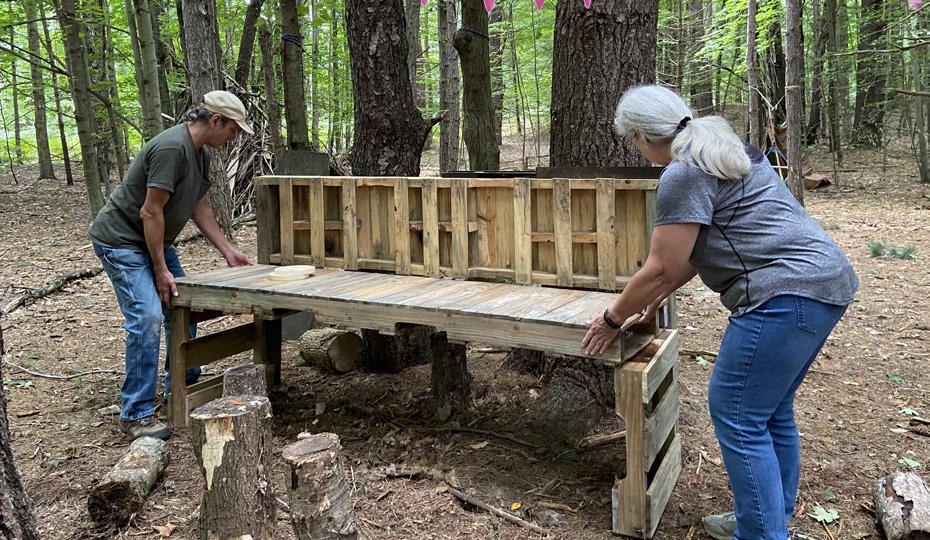
Volunteers of the Year Frank and Teresa Doll created a mud kitchen for our Forest School Base Camp.
The Conservation District is so grateful for the generosity of Oceana County residents such as Frank and Teresa, who give of their time and treasure to make
programs like our summer Nature Day Camps possible and accessible for all children. Our nature day camps reached the largest group of campers yet in 2024, providing an immersive learning experience for children ages 6-12 during the three theme weeks: At the Pond, In the Forest and On the Farm. The continued, generous financial support from community members for our scholarship program means that all children who want to go to camp, get to go to camp.
Conservation District staff, along with area educators and naturalists, provided engaging, hands-on activities for campers, such as learning about the amazing world of dragonflies with naturalist Greg Swanson, exploring the germination of giant sequoias with Gary Kowalczyk, making plastic from milk with Marissa Snider and a squirmy but yummy, gummy earthworm experience with science teacher Erika Fatura. But camp wouldn’t function or be nearly as fun without our amazing teen staff. In 2024 we celebrated our first cohort of aging-out campers who returned to camp to serve as junior counselor volunteers. In this introduction to the world of meaningful work and civic engagement, junior counselors pair up with senior counselors to shepherd campers through daily activities and share their love of nature.
In addition to children’s programming, the 2024 Conservation District events calendar was filled with numerous guided hikes and workshops. From our popular owl prowls, led by Conservation Technician Adam Chandler, to birding field trips and the Christmas Bird Count headed up by bird expert and MAEAP Technician, Lynda Herremans, residents of Oceana County found many opportunities to learn about our feathered friends and their role in maintaining a balanced ecosystem. Landowner assistance was addressed through workshops on a variety of topics, such as Hemlock Wooly Adelgid management led by Stewardship Coordinator Sky Harsch, a Solar and Farmlands Seminar coordinated by District Manager Laura Ackerman, and the Planting for Wildlife Workshop led by Forester Rod Denning and former Executive Director Suzie Knoll. A highlight of 2024 adult education programming was Recovering our Roots, a series on identifying, harvesting and using native plants. In this series of four seasonal workshops, led by local farmer and forager Amanda Jones, participants learned to identify important medicinal plants in their native habitat, how to sustainably and safely gather plants and ways in which to prepare them for their many benefits and uses. Roadside weeds will never look the same!
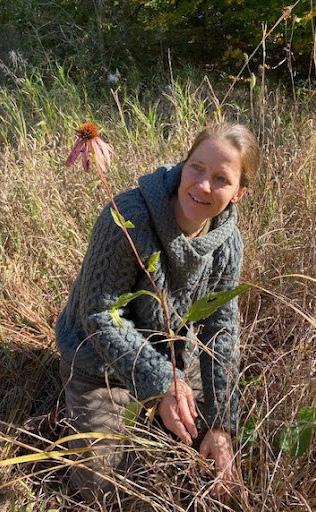
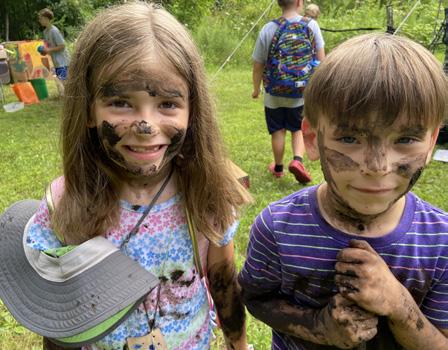
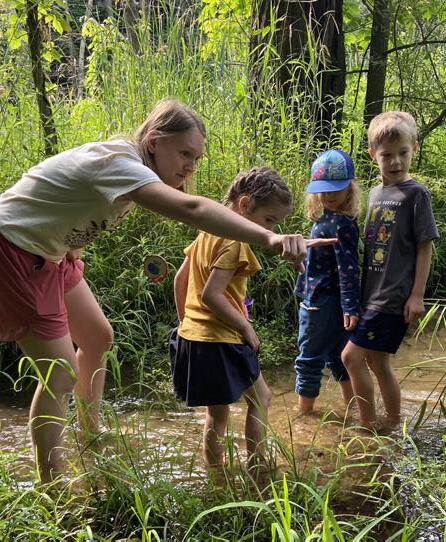
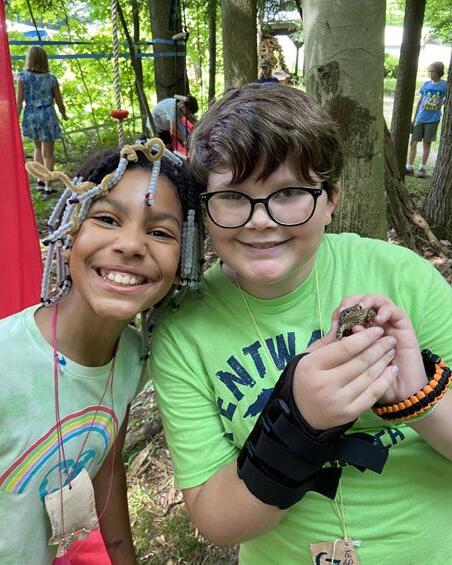
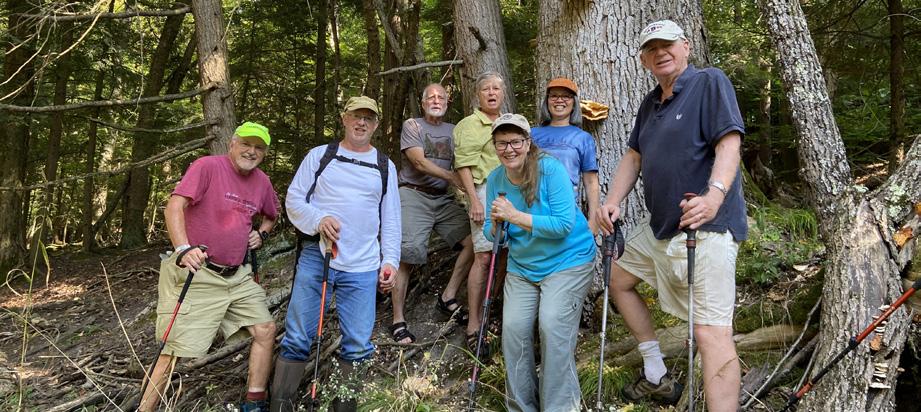
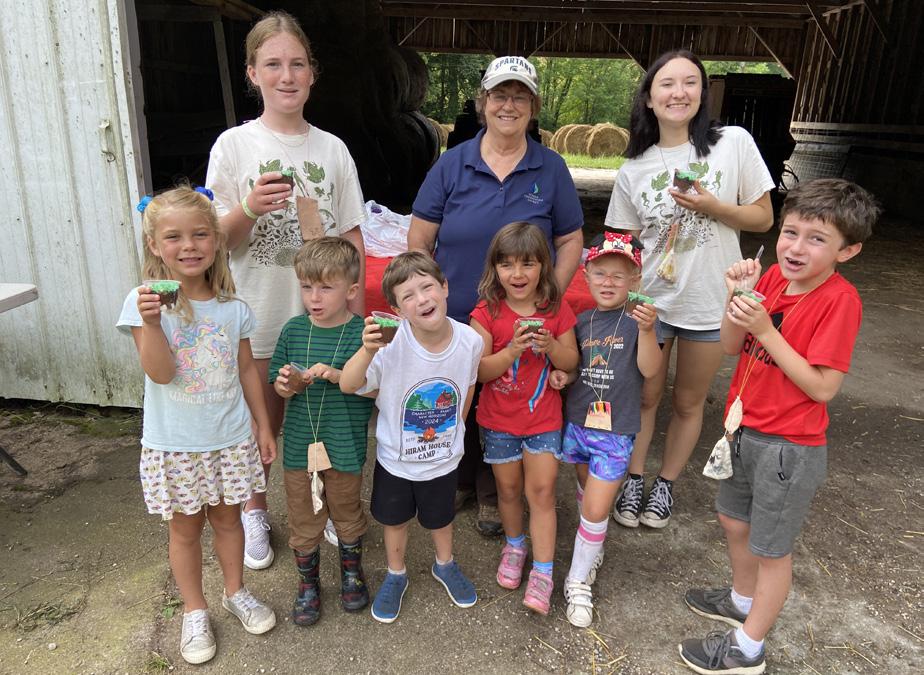

The Natural Resources Conservation Service (NRCS) is an agency of the United States Department of Agriculture (USDA) working with private landowners to install or implement conservation practices on their land. NRCS partners with, and works directly through, local conservation districts to educate and assist farmers, ranchers, and rural
landowners to protect the natural resources with funds available through federal farm-bill programs.
In 2024, the Environmental Quality Incentives Program (EQIP) provided $101,517 to nine landowners in Oceana County to address natural resource concerns. There were 6 new EQIP contracts totaling $491,403. EQIP provided funding for agrichemical storage buildings, tree/shrub plantings, windbreak establishment, cover crops, critical area plantings, nutrient and pest management, irrigation water management, prescribed grazing, livestock pipeline and watering facilities, pasture planting, stream crossing, grassed waterways, and more. The
Conservation Stewardship Program (CSP) provided $617,983 to 58 landowners looking for additional opportunities to expand on existing conservation efforts. There were also 7 renewals and 10 new CSP contracts, totaling $1,090,496 over the next 5 years. CSP provided funding for cover crops, conservation cover, pollinator and monarch habitat plantings, tree and shrub establishment, forest management, irrigation water management, and more.
The Shelby USDA Service Center office looks forward to continuing to work with landowners on their agricultural and conservation goals. Call (231) 861-5600 for more information.
Environmental Quality Incentives Program (EQIP) provides financial and technical assistance to agricultural producers to address natural resource concerns and deliver environmental benefits such as improved water and air quality, conserved ground and surface water, increased soil health and reduced soil erosion and sedimentation, improved or created wildlife habitat, and mitigation of increasing weather volatility.
Conservation Reserve Program (CRP) reduces soil erosion, protects the nation’s ability to produce food and fiber, reduces sedimentation in streams and lakes, improves water quality, establishes wildlife habitat, and enhances forest and wetland resources. It encourages farmers to convert highly erodible cropland or other environmentally sensitive acreage to vegetative cover, such as tame or native grasses, wildlife plantings, trees, filter strips, or riparian buffers. Farmers receive an annual rental payment for the term of the multi-year contract. Cost sharing is provided to establish the vegetative cover practices.
Conservation Stewardship Program (CSP) helps build on existing conservation efforts while strengthening agricultural operations. Whether producers are looking to improve grazing conditions, increase crop resiliency, or develop wildlife habitat, NRCS can custom design a CSP plan to help meet those goals. By identifying natural resource problems and providing technical and financial assistance to solve those problems, higher stewardship levels can be obtained in an environmentally beneficial and cost-effective manner.
Agricultural Conservation Easement Program (ACEP) helps landowners, land trusts, and other entities protect, restore, and enhance wetlands, grasslands, and working farms and ranches through conservation easements. Under the Agricultural Land Easements component, NRCS helps American Indian tribes, state and local governments and non-governmental organizations protect working agricultural lands and limit non-agricultural uses of the land. Under the Wetlands Reserve Easements component, NRCS helps to restore, protect and enhance enrolled wetlands.
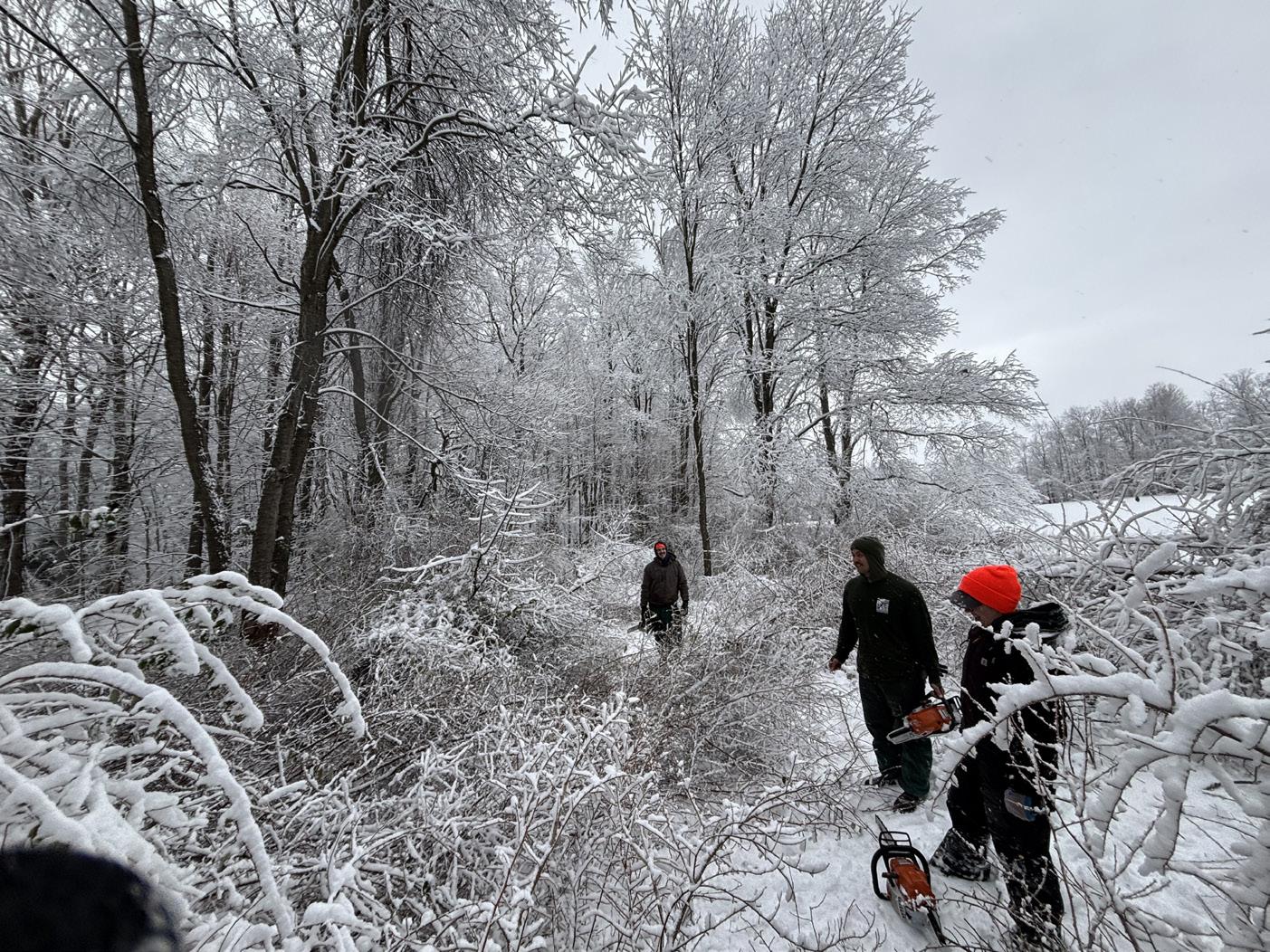

Oceana Conservation District is taking an active role in permanently protecting natural and scenic lands that provide opportunities for education, research and recreation. To date, the district has established two nature preserves, both in Benona Township, thanks to generous families who gifted the land.
Otto Nature Preserve
Otto Nature Preserve continues to provide solace for all who walk its 1.5 miles of trails. Our community enjoyed events at Otto all year long in 2024, gathering for Fridays in the quiet winter forest and rowdy resident owl sightings under the light of the spring full moon. Summer forest bathing taught us how to listen and connect, while fall presented opportunities to awe at the gorgeous autumn colors. So many in our community continue to enjoy the beauty of this 80-acre oldgrowth forest both through district events and individual exploration.
We thank Dick and Lorayne Otto for this incredible community gift, we thank all who donated time or materials toward ongoing development and maintenance, and we thank our many participants that make every walk in these woods special!
Stony Creek Nature Preserve
2024 was a monumental year out at Stony Creek Nature Preserve, the 40-acre parcel donated to the Oceana Conservation District by the Hunter and Hedlund families in 2022. Volunteers helped with boundary sign installation and invasive species management, pulling garlic mustard and Japanese barberry and conducting detection surveys for Hemlock Wooly Adelgid. Our partners at Muskegon Conservation District removed 3 acres of invasive autumn olive, and habitat restoration plans are underway. Community members and partners gathered on the property to test the completed trail designs on upland habitats and experience incredible animal encounters in the cedar swamps.
We are currently looking for volunteers who wish to donate time or other resources for trail development starting in March. Our work days are scheduled for the mornings of March 7th, April 4th, and May 2nd. If you would like to leave your mark on this community green space, please contact Stewardship Coordinator Sky Harsch at sky. harsch@macd.org. A tentative opening day is planned for summer of 2025.
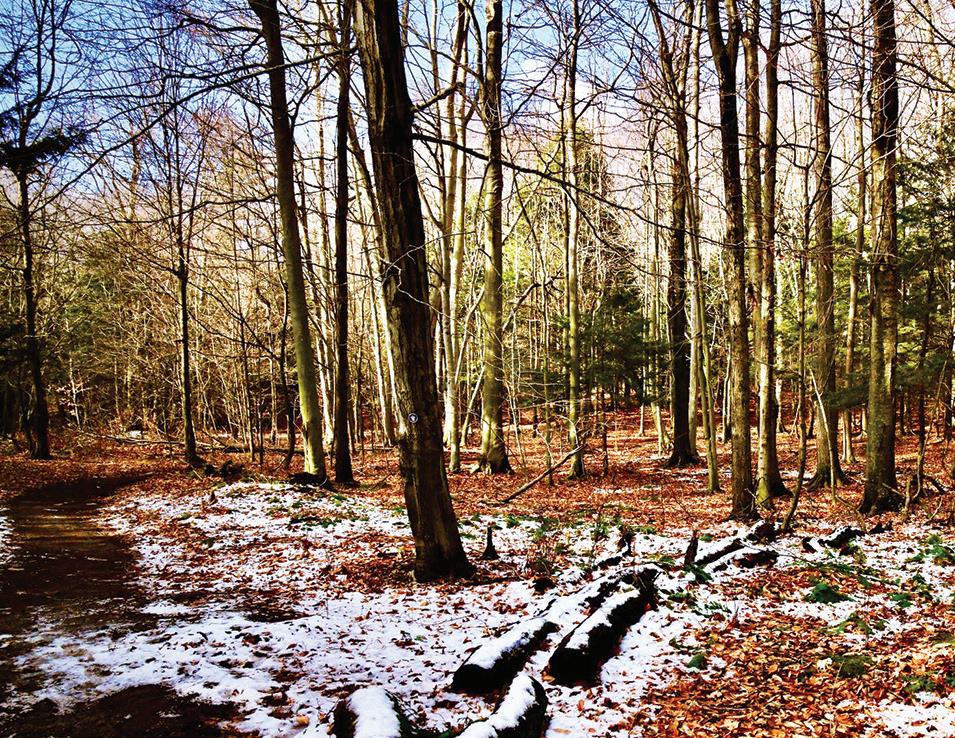
All living organisms rely on access to water for survival. Our need for water is one thing we have in common with the fish and frogs in the streams, the crops and livestock in our fields, the birds that migrate and those that stay in one place, and the microbes and fungi that extend through the soil beneath our feet. In Oceana County, we can look at Lake Michigan and see a vast supply of fresh water, and yet nearly all of our water is supplied from the ground and inland surface water sources. In the 1930s, conservation districts began to support practices that protected our water resources on the surface and underground. Today, we are working to protect water resources for the whole community, and here are some ways you can help!
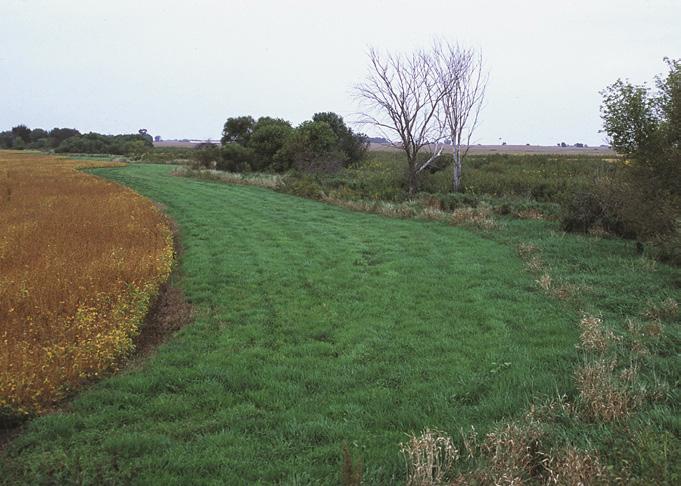
USDA-NRCS programs support planting filter strips and cover crops that retain soil, and filter the water running into our waterways, limiting pesticide and excess nutrient run-off.
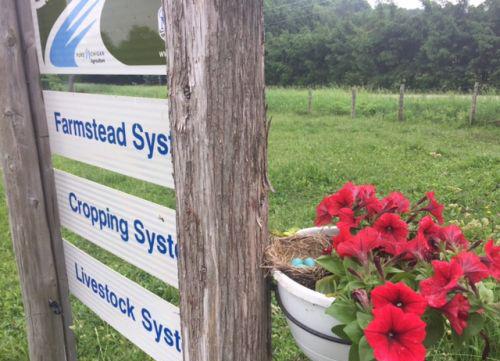
The MAEAP program works with area landowners to provide assistance in safely handling, applying and disposing of agricultural chemicals, and even provides cost-share dollars for water protecting and conserving practices.
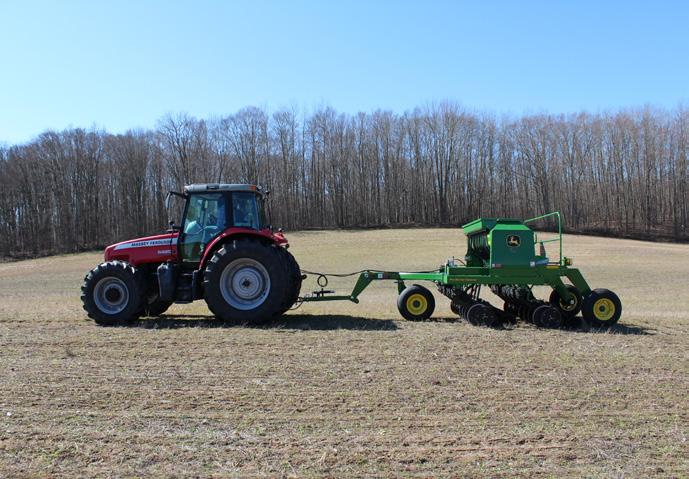
Landowners can rent our no-till drill to implement regenerative agriculture practices that reduce tillage and in turn decrease erosion and promote soil health. Microbes thrive in untilled fields and break down chemicals and pathogens to protect water quality.
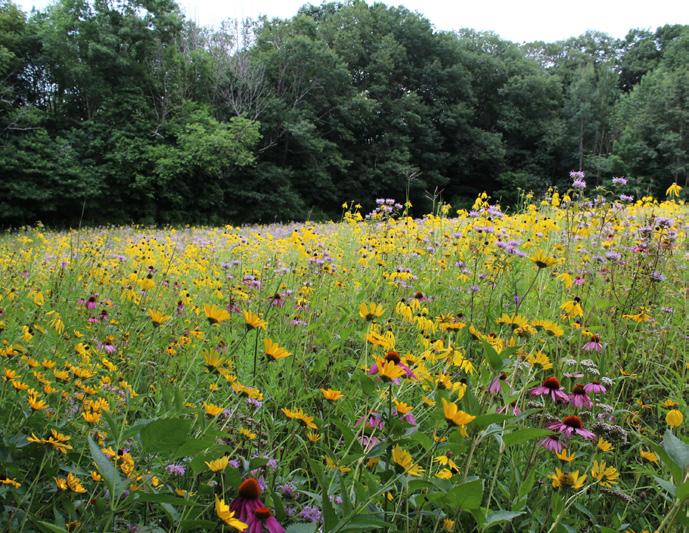
Our district offers many opportunities to plant native trees and plants. These species support biodiversity in the ecosystem and also provide deep roots that draw water down into the ground, reducing runoff and replenishing our aquifers.

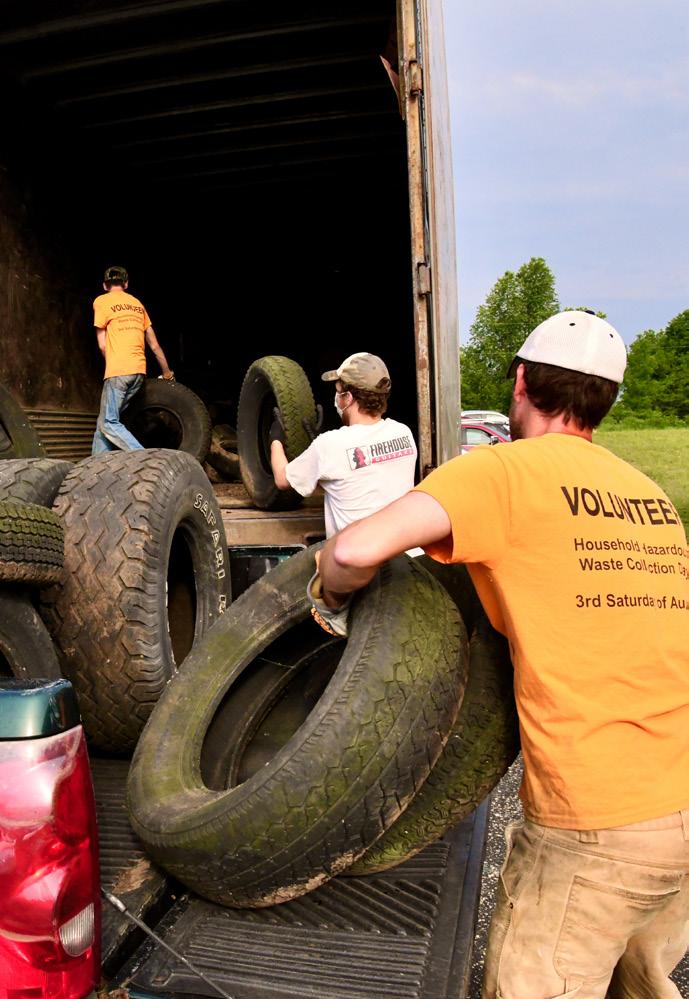
We offer tire collections through the Michigan EGLE scrap tire grant, protecting our soil and groundwater from the toxins that can be released as old tires break down.
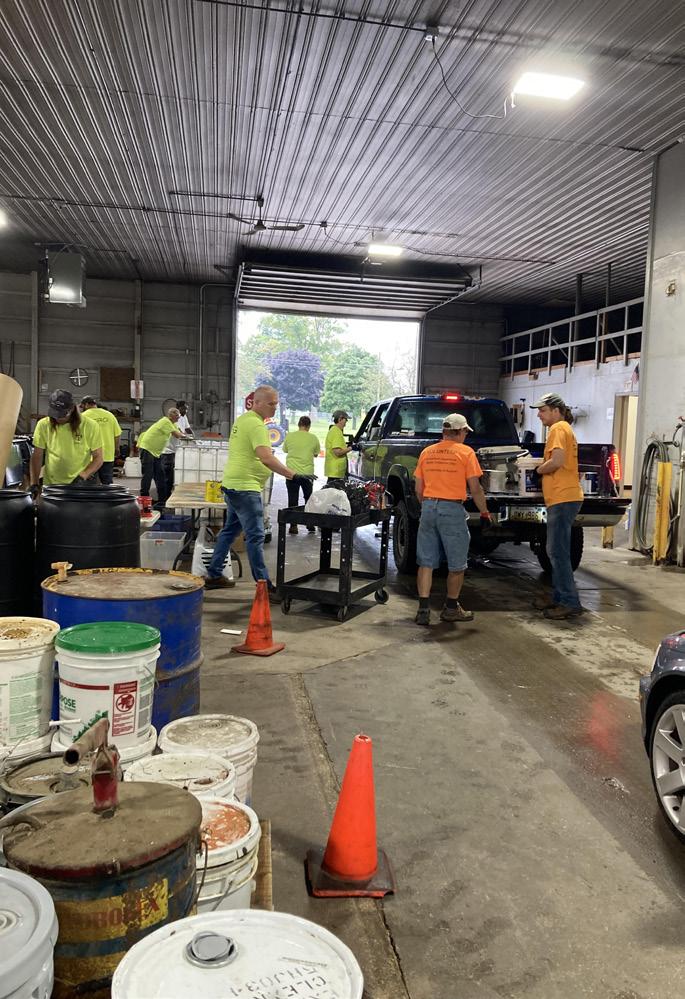
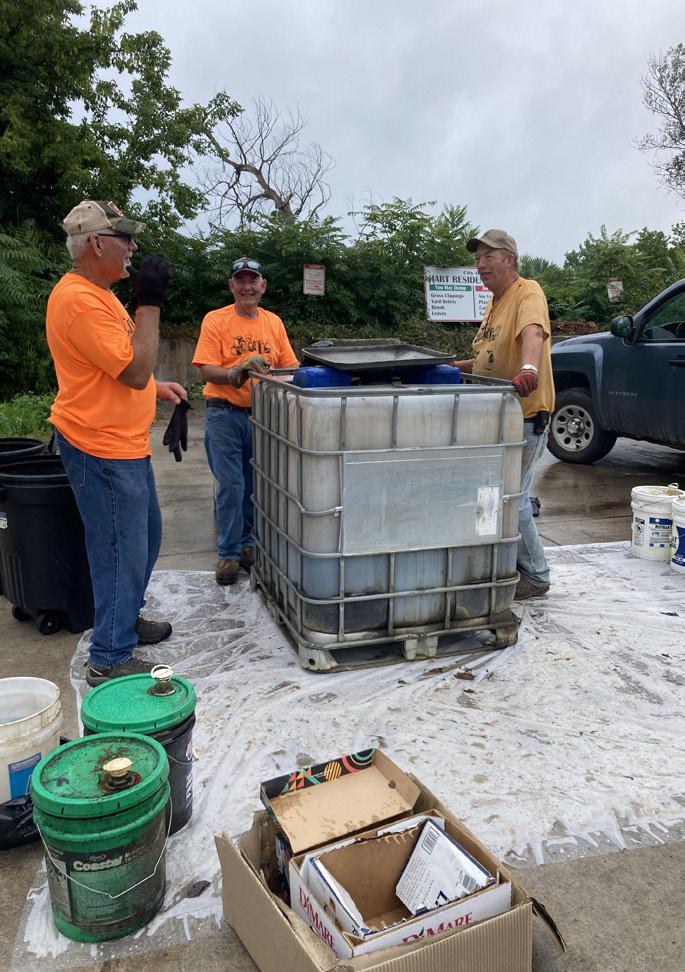
Our Household Hazardous Waste and Clean Sweep programs, in collaboration with Mason-Lake and Manistee Conservation Districts, collect thousands of pounds of old household chemicals, agricultural chemicals, batteries, electronics, and motor oil, ensuring that they are disposed of properly and do not contaminate our water supply.
Feb 7 Stony Creek Nat. Preserve Kick -off
4 – 6 pm Oceana Conservation District ∙ Shelby
Feb 12 Full Moon Owl Prowl
7:00 – 8:30 pm Otto Nature Preserve ∙ Shelby
March 7 Stewardship Day: In the Forest 9 am – 12 pm Stony Creek Nature Preserve ∙ Shelby
March 8 Geology and Forest Soils Seminar
9 am – 12 pm Oceana Conservation District ∙ Shelby
March 14 Full Moon Owl Prowl
7:30 – 9 pm Otto Nature Preserve ∙ Shelby
March 19 Tree Sale Orders Due
5 pm Mail in order form or place order online
Mar 20 Ag & Natural Resources Banquet
5 – 9 pm West Michigan Research Station ∙ Hart
April 4 Stewardship Day: In the Forest
9 am – 12 pm Stony Creek Nature Preserve ∙ Shelby
April 14 Stewardship Day: On the Roadside
9 – 11:30 am US 31/Polk Rd ∙ Hart
April 19 Tree Sale Pickup Date!
9 am – 1 pm Oceana County Fairgrounds ∙ Hart
May 2
Stewardship Day: In the Forest
9 am – 12 pm Stony Creek Nature Preserve ∙ Shelby
May 9 Wildflower Walk
2 – 3:30 pm Nicholas residence ∙ Shelby
May 23 Native Plant Sale
10 am – 3 pm Oceana Conservation District ∙ Shelby
May 30 Birding Field Trip
8 – 11 am Walkinshaw Wetlands ∙ Leavitt Twp.


June 20 Summer Solstice Sunset
9 am – 1 pm Cedar Point County Park ∙ Mears
June 23-26
Nature Day Camp (At the Pond)
9 am – 1 pm Gales Pond County Park ∙ Hart
July 14-17 Nature Day Camp (In the Forest) 9 am – 1 pm Doolittle County Park ∙ Hart
July 21 Stewardship Day: On the Roadside 9-11:30 am US 31/Polk Rd ∙ Hart
July 22 Beginning Farmer Field Day 9 – 4 pm West Michigan Research Station ∙ Hart
Aug 4-7 Nature Day Camp (On the Farm)
9 am – 1 pm Earthscape Farm ∙ Hesperia
Aug 16 Hazardous Waste Collection 9 am – 1 pm Hart Dept. of Public Works ∙ Hart
Sept 12 Mushroom Foray 9 am – 12 pm Otto Nature Preserve ∙ Shelby
Sept 19 Dune Grass Sale (pre-order required) 8 am – 4 pm Oceana Conservation District ∙ Shelby
Sept 20 Stewardship Day: At the Beach 9 am – 12 pm Various Locations ∙ Oceana County
Sept 26
Stewardship Day: On the Roadside
9 – 11 am US 31/Polk Rd ∙ Hart
Oct 17 Fall Colors Forest Foray
1 – 3 pm Otto Nature Preserve ∙ Shelby
Nov 6 Volunteer Appreciation Celebration 4:30 – 6:30 pm Oceana Conservation District ∙ Shelby
Dec 16 Christmas Bird Count 8 am – 3 pm Pentwater, Hart, Mears, Shelby


provide an email address so we can send updates and a reminder







